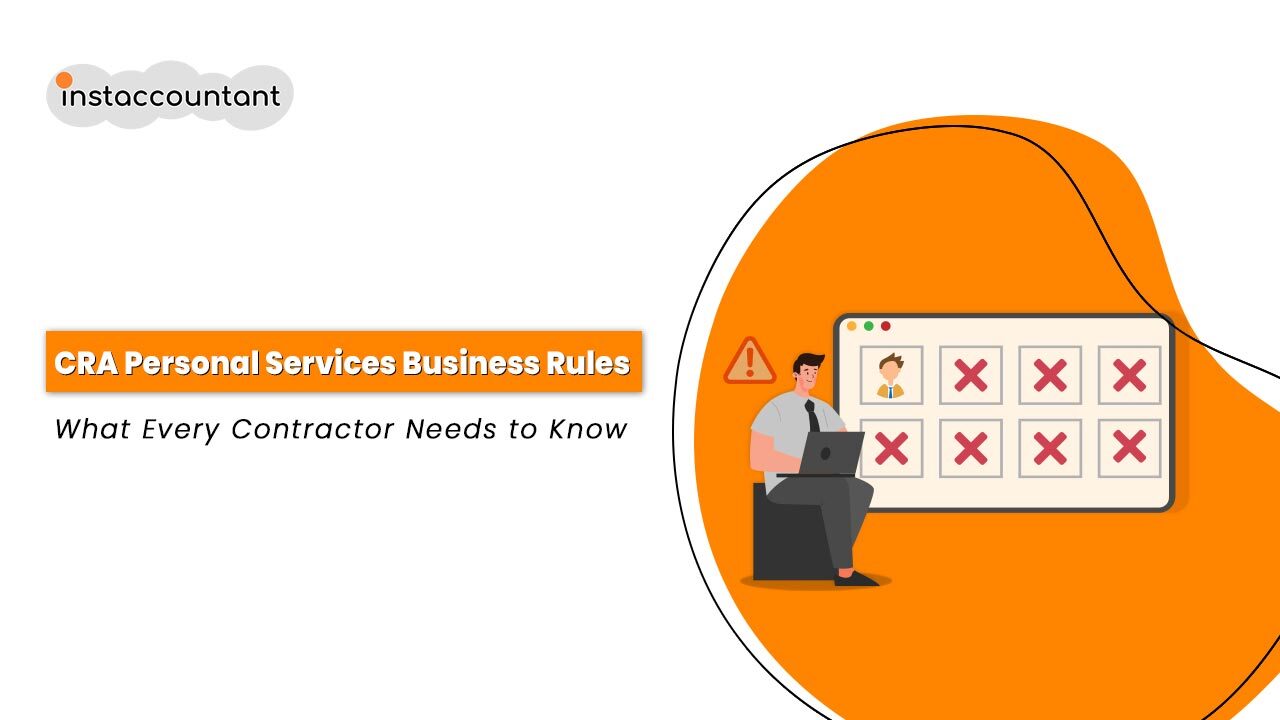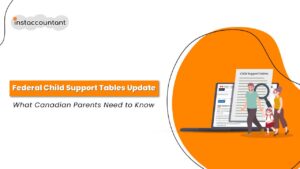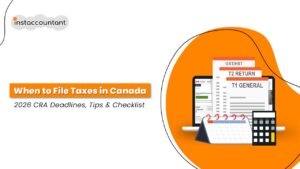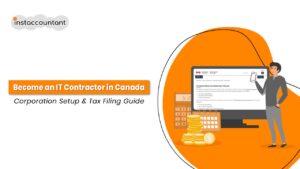Hey Canadian contractors, freelancers, and incorporated professionals! Let’s talk about a silent threat that could seriously impact your bottom line: the Personal Services Business (PSB) rules from the Canada Revenue Agency (CRA).
It’s a classification many contractors don’t even realize they’re at risk of, yet it can quietly hike your tax bill, snatch away your valuable small business deduction and severely limit the expenses you can claim through your corporation.
Here’s the kicker: in 2025, the CRA is increasingly flagging more professionals under PSB rules. Audit activity is on the rise, especially for incorporated individuals who work primarily with a single client. Whether you bill as a solo consultant or run a small incorporated business, being labelled a PSB could dramatically change how your income is taxed.
In this essential guide, we’re going to break down what it really means to fall under CRA’s PSB classification, why it’s more relevant than ever this tax year and how you can proactively protect your business from unexpected tax consequences.
Who’s at Risk of Being Classified as a Personal Services Business?
If you’re a Canadian contractor or freelancer operating through a corporation, you could be at risk of being classified as a PSB if your work arrangements start looking a little too much like an employer-employee relationship in the CRA’s eyes.
Being slapped with a PSB label has profound tax implications. It slashes your eligible tax deductions and subjects your corporate income to higher tax rates. Understanding these risk factors is absolutely critical to avoiding potential penalties and saving serious cash.
The CRA uses a series of “tests” often called “badges of trade” or factors resembling employment to determine if your incorporated business is actually a PSB. These factors typically revolve around:
- Control: Do you work under tight supervision? Are your instructions highly detailed, with limited autonomy over how tasks are performed? The more control your client has over your work, the higher the PSB risk. Independent contractors call their own shots.
- Tools and Equipment: Do you primarily use tools, software, or equipment provided by your client? If so, the CRA might see you more as an employee. True independent contractors typically supply and maintain their own professional tools.
- Financial Risk: Do you genuinely face financial risks, like losing money on a project, or are all your operational expenses covered by the client? An actual business takes on risks, liabilities, and invests in its own growth.
- Integration: How deeply embedded are you in your client’s business? Being listed in internal directories, using client email addresses, or attending mandatory team meetings might make you look like an internal part of their structure rather than an independent service provider.
- Exclusivity: Are you working for a single client on an ongoing basis without actively seeking or maintaining relationships with other clients? This can significantly increase the likelihood of a PSB classification. Diversifying your client base is a key indicator of independence.
Remember, the CRA looks at the overall nature of your working relationship on a case-by-case basis, not just one factor. If your incorporated business functions in a way that mirrors traditional employment, you’re vulnerable to the PSB rules.
Personal Services Business (PSB) vs. Independent Contractor
In Canada, the difference between a Personal Services Business (PSB) and an independent contractor is absolutely vital for your tax responsibilities and financial benefits. The CRA applies specific criteria to evaluate your working relationship and this classification drastically impacts your tax treatment.
PSB Characteristics (The Red Flags):
When an incorporated individual provides services that the CRA deems to resemble an employee-employer relationship, it’s a PSB. Think of it this way: if you, the individual, would be considered an employee if you weren’t incorporated, your corporation could be a PSB.
- Control: The client dictates the how, when, and where of your work.
- Tools & Equipment: You primarily use the client’s tools, software, or equipment.
- Financial Risk: You bear minimal financial risk; the client covers most business-related expenses.
- Integration: Your work is deeply embedded in the client’s business, making you seem like an extension of their team.
- Exclusivity: You work predominantly or exclusively for one client.
Independent Contractor Characteristics (The Green Flags):
Independent contractors are true separate business entities, even when incorporated.
- Control: You maintain autonomy over how you complete your work, setting your own schedules and processes.
- Tools & Equipment: You own and utilize your own tools, devices, or software.
- Financial Risk: You assume real business risks, covering operating costs and having the genuine opportunity for profit or loss.
- Multiple Clients: You often serve multiple clients as part of your business operations.
- Opportunity for Profit: Your success truly depends on your business acumen, efficiency, and resource management.
The classification has starkly different tax consequences. PSBs face stricter rules, including denial of the powerful small business deduction and significantly higher corporate tax rates. Independent contractors, on the other hand, unlock greater tax-planning strategies, can claim a wider range of legitimate business expenses and have more flexibility with retaining profits within their corporation.
Understanding these differences is vital for minimizing your risks and ensuring full CRA compliance.
Consequences of Being Classified as a Personal Services Business
Getting classified as a Personal Services Business (PSB) by the CRA isn’t just an inconvenience; it leads to severe financial and operational implications that can cripple your business.
- Sky-High Tax Rates: Most Canadian small businesses benefit from the Small Business Deduction (SBD), which dramatically lowers their corporate tax burden (often to 9-12% on active business income). PSBs are ineligible for the SBD. This means your corporate income is taxed at the highest general corporate income tax rates (often over 30%!), leaving significantly less money for reinvestment or personal use.
- Severely Restricted Deductions: PSBs face tight limits on the business expenses they can claim. Many common deductions for other corporations such as home office expenses, travel, supplies or even professional development are largely disallowed. This restriction massively increases your effective tax load and removes your ability to legitimately reduce your taxable income.
- Double Taxation Risk: Because PSBs must distribute income to their shareholders (which is typically just you, the individual contractor), you face the risk of double taxation. The income is first taxed at the high PSB corporate rate, and then any subsequent dividends paid to you as a shareholder are taxed again at your personal income tax rate. This compounding effect creates a heavy financial burden.
- Loss of Competitive Edge: Reduced profitability from higher taxes and fewer deductions can leave PSBs less equipped to invest in essential tools, new technology or marketing for business growth. This puts you at a significant disadvantage against competitors who maintain their independent contractor status.
- Retrospective Liability: One of the scariest consequences: if the CRA audits you and retrospectively determines you qualify as a Personal Services Business (PSB) for previous years, you could face substantial additional tax liabilities, interest charges and potentially penalties for all those past years. These retroactive adjustments can create massive, unplanned financial obligations that strain both your business and personal finances.
Understanding these profound consequences is absolutely crucial for any freelancer or contractor operating through a corporation in Canada. It’s a risk you cannot afford to ignore.
Key Strategies to Avoid Personal Services Business Classification
The good news is you’re not powerless! To avoid being classified under the CRA’s Personal Services Business (PSB) rules, you need to be strategic in how you structure your working arrangements and operations. These strategies are your best defense:
- Maintain an Arm’s-Length Relationship with Clients: Establish clear boundaries. Ensure your contracts do not give your client control over how, when, or where your work is performed. Maintain flexibility in work hours, methods, and resource allocation.
- Cultivate Multiple Clients: This is perhaps the most definitive way to showcase independence. Relying on just one client can make your corporation appear subordinate. Actively seek and work with diverse clients to demonstrate you operate a self-sufficient business.
- Possess a Distinct Worksite: Operating from your own dedicated office space (whether a commercial office or a dedicated home office) rather than exclusively at the client’s premises, signals independence. Ensure you have your own necessary infrastructure.
- Supply Your Own Tools: It’s crucial to own and utilize your own professional tools, software and equipment. Relying primarily on client-provided resources suggests an employee-like relationship, making you vulnerable to PSB classification.
- Clearly Define Contractual Terms: Your contracts are your strongest legal document. They must explicitly establish your role as an independent contractor, emphasizing your control over how work is conducted, your autonomy in decision-making and outlining invoicing practices (not regular “wages”).
- Hire Staff or Subcontractors: Having employees or regularly subcontracting portions of your work to others under your corporation is a strong indicator that you run a legitimate business, reducing the likelihood of a PSB designation.
- Market Your Business: Actively promoting your services publicly strengthens your position as an independent contractor. Develop a website, network, engage in advertising and undertake marketing activities to highlight your entrepreneurial intentions.
- Avoid Behavioral Indicators of Employment: Be mindful of how you integrate. Refrain from taking directives that resemble employer-employee relationships, such as attending mandatory team meetings, strictly following client-imposed schedules (rather than project deadlines), or submitting timesheets that look like payroll records. Always act as a business providing a service.
These strategies, when diligently implemented, can significantly reduce the risk of being categorized as a Personal Services Business. By establishing clear independence and building a robust business structure, you can safeguard your tax position while fully complying with CRA regulations.
The Role of Written Contracts in Maintaining Independence
A well-structured written contract isn’t just a formality; it’s a critical tool for affirming your independent status and protecting your business from being classified as a Personal Services Business (PSB) by the CRA. A clear, formal agreement helps demonstrate that your relationship with the client is business-to-business, not employer-employee.
Your contract should clearly outline:
- Scope of Work & Deliverables: What exactly are you doing, and what’s the end product?
- Payment Terms & Timelines: How and when will you be paid (e.g., project-based, milestone payments, rather than hourly wages subject to deductions)?
- Control & Autonomy: Crucially, specify that you have autonomy over the method and manner in which the work is completed. This includes the use of your own tools and your discretion in hiring subcontractors if applicable.
- Risk of Loss or Profit: Include clauses acknowledging that your corporation bears the risks, such as covering your own expenses and managing liabilities. Your profit isn’t guaranteed; it depends on your efficiency and business management.
- Non-Exclusive Relationship: Explicitly state that your corporation is free to offer services to other clients simultaneously and is not restricted from doing so.
Documenting these details strengthens your case for independence in the eyes of the CRA. Clauses about dispute resolution and termination conditions also reflect a true business arrangement, not an employment agreement.
Incorporation and Its Effect on PSB Classification
Incorporating your business is a fantastic strategy for Canadian contractors and freelancers, offering tax advantages and legal separation. However, it’s a common misconception that incorporation alone shields you from Personal Services Business (PSB) rules. It does not.
The CRA looks beyond the legal structure of your corporation to the substance of your working relationships. If your incorporated individual provides services that fundamentally resemble an employee-employer dynamic, the CRA can still classify your corporation as a PSB.
As discussed, the CRA uses criteria like control, tool ownership, financial risk and integration. If your client dictates your working hours, provides all your tools, assumes all financial risks and retains significant decision-making control, your corporation is at high risk of being a PSB, regardless of its incorporated status. This means:
- Limited Tax Deductions: Many standard corporate expenses you hoped to claim will be disallowed.
- Higher Tax Rates: Your active business income will be taxed at the much higher PSB rates, not the small business deduction rate.
To avoid falling into the PSB trap, you must strategically structure your actual business operations. Incorporation provides legal benefits, but your actions and relationships with clients are what determine your tax classification.
Documenting Business Activities to Prove Independence
To effectively navigate CRA Personal Services Business (PSB) rules, meticulous documentation of your business activities isn’t optional, it’s essential. Your records are your strongest evidence of operational independence and an arm’s-length relationship with clients.
Here’s what to focus on:
- Formalize Contracts and Agreements: As mentioned, detailed contracts are paramount. Ensure they explicitly state your autonomy in decision-making, such as the right to subcontract or allocate hours as necessary. Avoid any language that implies an employer-employee relationship.
- Record Decision-Making Processes: Documenting your control over how and when work is completed supports your independent status. Keep records like project timelines, meeting notes where your decisions are highlighted, or daily schedules that showcase your autonomy.
- Track All Business Expenses: Maintaining comprehensive records of all purchases, travel, and other business-related expenses reinforces your independent operation. Document receipts, invoices, and clear explanations, especially for expenses incurred without direct client reimbursement. This proves you bear financial risk.
- Keep Client Communications Professional: Store email correspondence, task lists, and other communications that reflect professional, business-to-business interactions, rather than employee-to-employer dynamics.
- Maintain Evidence of Multiple Clients: Store independent client invoices, separate contracts, and project records from all your clients. This validates that you are not dependent on one primary source of income.
Conclusion
In the fast-moving and vibrant world of freelancing and contracting in Canada, the need to stay on top of your tax game is real! That might sound like a lot, but think about it: Every step you take toward solid record-keeping (and strong operational independence) is an investment in your peace of mind, and in the future of your business.
Think of it this way: smart tools like accounting and project management software are not only tools for big corporations. They’re your secret weapon for storing all that vital paperwork in an organized and handy way. By taking these proactive measures you are not only preventing pitfalls, but you’re also establishing a base of confidence. You’ll know exactly how to work around those confusing CRA Personal Services Business (PSB) rules, safely take your most tax-sensitive corporate dollars out of the company and access tax planning strategies other contractors aren’t even aware of that drive your business’ growth.




